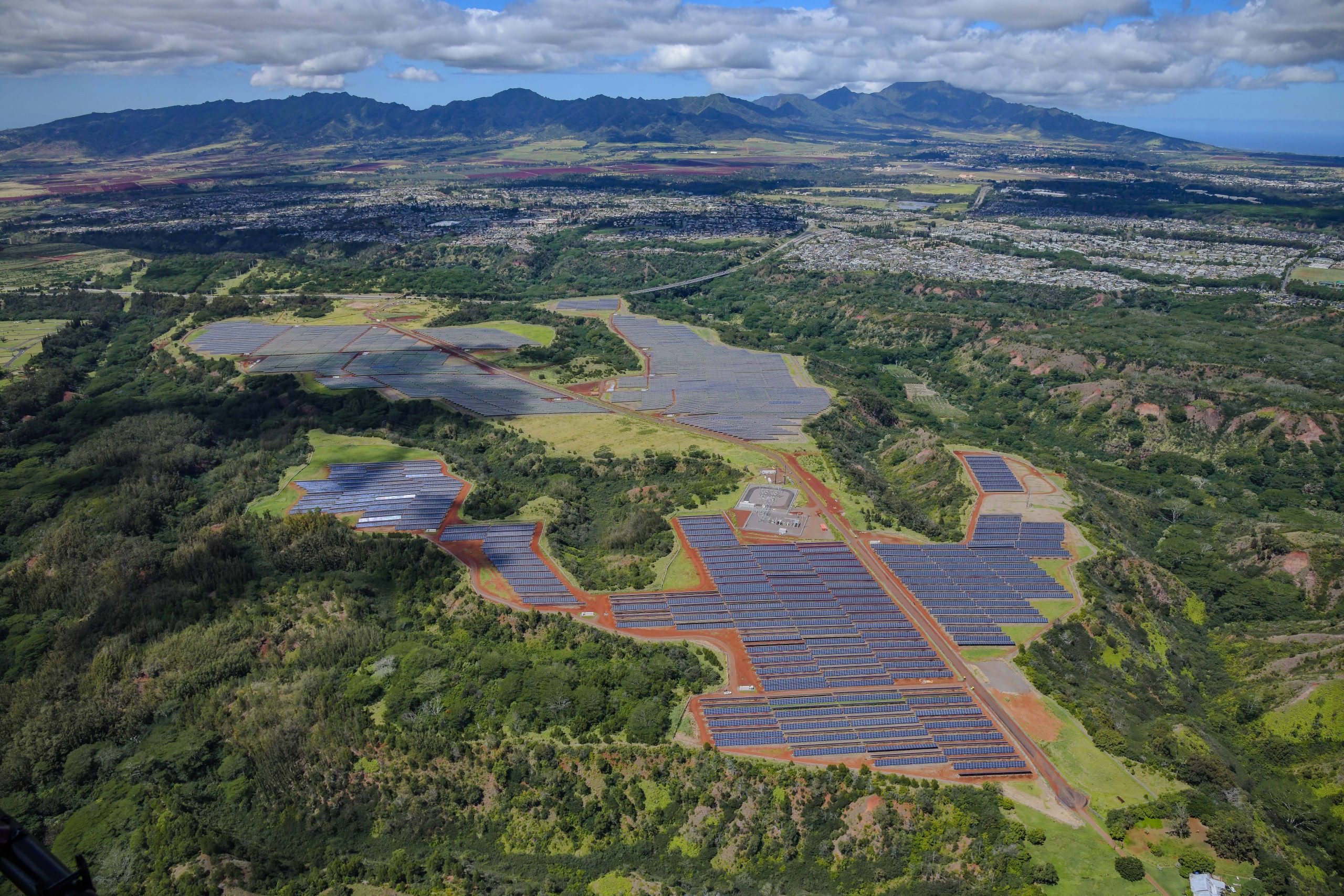At the firm, Camuso helped develop the largest solar project in state history.
As the state aims toward achieving 100% clean energy by 2045, Hawaii businesses have seen unprecedented demand for commercial solar project.
G70, a Hawaii architecture, planning, and civil engineering design firm, is one such business that has evolved to meet the demand. In recent years, it has contributed to major projects on Oahu, including the largest solar farm in the state: Kawailoa Solar Energy Farm. Principal Planner at G70, Tracy Camuso, plays a lead role in utility-scale solar development. Born and raised in Hawaii, Camuso draws on a career spanning the state Legislature, Congress, and over 15 years of environmental and land-use planning at G70. She has worked at the nexus of policy, planning and development in Hawaii. Today, she oversees a solar energy project portfolio that has grown to contribute some 10% to G70’s business.
Camuso discussed three projects recently completed with partners Clearway Energy, a New Jersey company that develops and operates solar farms nationally; Moss and Associates, a Florida-based construction firm that delivered $750 million of project value nationally last year; and Goodfellow Brothers, long-time Maui-based construction contractor.
First of the projects, Kawailoa Solar, Hawaii’s largest solar project to date, is situated next to the state’s largest wind farm – also a Clearway project – above Waimea Bay on the North Shore. It was constructed by Goodfellow Brothers at a project cost of $7 million. This 49 megawatt project uses more than 500,00 solar panels to generate enough power for 14,300 homes annually.
Second, located in Central Oahu, Clearway’s Waipio Solar adds another 150,000 panels, providing 45.9 MW of generation capacity to the electric grid.
And third, Mililani Solar II provides 14.7 MW of capacity using 160,000 solar panels on vacant former pineapple lands. The generation capacity of each of these projects varies based on the year, make, and model of the solar panels.
These solar projects, which last for 20 to 30 years, offer opportunities to integrate agriculture with renewable energy generation, Camuso said. “Sheep grazing and mixed-use solar-plus-farming plots and elements of CLearway’s current projects. And the future holds more potential in striking a balance between Hawaii’s need for energy and food on finite land.”
Aiming to support the industry by fostering local energy talent, Clearway in partnership with Blue Planet and Kamehameha Schools, offers internships for students, scientists, and engineers.
Beyond these three major projects, there are more than 20 utility-scale solar projects already under construction or approved for development, Camuso added.
Despite positive business momentum, more needs to be done, Camuso said. “It’s getting more challenging to build these projects. And as land becomes more scarce, we’re going to have to figure out how to better balance food and renewables together. Increased stakeholder education and local community engagement will be key.”
Nevertheless, she remains optimistic. “I believe in our clients as leaders in this industry,” Camuso said. “It can be a tough job, but we’re trying to save the planet. Right?”
